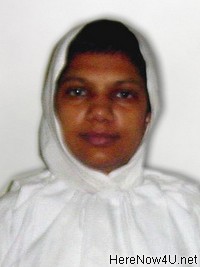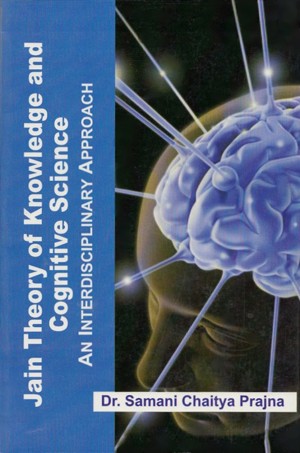Jain theory of knowledge has its basis rooted in karma theory and cognitive science in Genetics. The information processing and genetics to some extent of systematic treatment is elaborated in the Jain school of epistemology in the following manner. It can be very well can be studied in contrast with stimuli and response behavior represented in modern neural studies.
The study of neuroscience begins with the individual nerve cell or neuron as the fundamental unit of the nervous system. Each neuron must perform five functions as follows:
- Receive information from the internal or external environment or from other neurons.
- Integrate the information it receives and produce an appropriate output signal.
- Conduct the signal to its terminal ending, which may be some distance away.
- Transmit the signal to other nerve cells, glands, or muscles.
- Coordinate the metabolic activities that maintain the integrity of the cell.
As per Biology,[48] although neurons vary enormously in structure, a typical vertebrate neuron has four distinct structural regions that carry out the functions above. These regions are the dendrites, the cell body, the axon and the synaptic terminals. The electric activity in neuron can be summarized as follows.
In as unstimulated neuron, the inside of the cell is negatively charged with respect to the extra-cellular fluid. This state is called the resting potential.
Signals received from other neurons are small, rapidly fading changes in potential called inhibitory post synaptic potentials (IPSPs). Make neuron more negative inside and less likely to produce an action potential. Excitory post synaptic potentials (EPSPs) make neuron less negative inside and bring it closer to threshold.
Reaching threshold opens the sodium channels and triggers an action potential. An action potential is a positively charged wave that travels undiminished in magnitude.
The resting potential is restored when the sodium channels close spontaneously and additional potassium channels open, allowing potassium to diffuse out and restore the negative resting potential.
According to Prabha Jain and L.C. Jain[49] these states of action potential and resting potential can be compared with dormant and rising states karma. In fact, the whole nervous system can be explained on the basis of partial destruction and rise of karmic particles. To avoid elaboration the study restricts itself to gross aspects of neuroscience (information processing) and Jainism.
In science, a number of models have come up that explains information processing. The most widely known computer like model of mental functioning is Atkinson and Schifrin store model.[50] His model views information as being held in three parts of the system-for processing as the sensory register, Short Term Memory and Long Term Memory.[51] The similar model can be established on the basis' of scriptural facts obtained in Nandí, and its commentaries Viśeṣāvaśyaka Bhāṣya, and other later texts such as Pramāṇa Mīmāṁsā and Bhikṣu Nyāya Karṇikā.
The channels of Information (stimuli or data) as per Jain canon Nandi[52] can be of two types. Thus altogether information processing can be of five types as follows:
Information received through senses and mind:
- Perceptual (mati jñāna) and
- Communicative or verbal cognition (śruta jñāna).
Information received beyond senses (Para perceptual):
- Clairvoyance (avadhi jñāna)
- Mind-reading (manahparyava jñāna) and
- Omniscience (kevala jñāna).
Each of them would be dealt in the further chapters. Thus, it is established that functional consciousness in Jainism is a defining characteristic of the soul. It is neither narrow as one cannot find any instance of soul devoid of functional consciousness nor is it broad as one cannot show an instance where consciousness remains without soul. The consciousness is functional in nature as there exist arthaparayāya in each and every existent.
Without this arthaparayāya there can be no arthakriyā (causal efficiency). Without arthakriyā nothing can exist even- the soul. Thus functional consciousness is that arthakriyā of the soul without which soul cannot exist.
The consciousness is self and other revealing in nature as explained in Jainism can very well be shown to square with Sartre's conception of consciousness. The same phenomenon was proved by Sartre though his live experiential examples, he rather rewords it as reflective and pre-reflective states of consciousness or positional and non- positional consciousness. The terms may vary but the concept remains the same that to know is to know that one knows, this is known as KK principle of knowledge where both philosophies integrate to complement each other. In its simplest form, the KK principle says that, for any proposition p, if one knows that p, then one knows that one knows it. More complex formulation is to say that if one knows that p, then one is in a position to know that one knows it.[53]
Knowledge is its inherent nature, where there is soul, there is knowledge. Omniscience or perfect knowledge resides within the soul, karma particles obstructs and difference in knowledge occurs, With the removal of karma veil, knowledge attains its perfectness i.e. omniscience
The study of cognitive science is interdisciplinary in nature including many disciplines such as neuroscience, artificial intelligence and information processing etc.
Matijñāna covers the whole range of cognition related to information processing as far as modern psychology is concerned. The* entire process beginning with contiguity of senses and the object, up to the subconscious impressions which are capable of rising again in the form of memory, recollection, recognition and all kinds of intellectual performances are included in perceptual cognition or mati jñāna in Jainism. The verbal knowledge or śrutajñāna is concerned with expression processing. The later three chapters we would deal with perceptual knowledge in its forms - perception, information processing and types of intelligence respectively. The fifth chapter deals with expression processing, and the sixth, seventh and eighth chapter deals with Extra Sensory Perceptual Processing.
Prabha Jain and L.C. Jain, Ādhunika Mastiṣka Sambandhī Khoje in Jain Karma Siddhānta ke Paripyekṣya main: Arhat Vacana, Vol. 14 Issue. 1, 2002, p. 77.
Atkinsons R.C. and Shiffrin R.M, Human Memory, A Profound System and Its Control Processes in the Psychology of Learning and Motivation, p. 2.
 Samani Chaitya Pragya
Samani Chaitya Pragya

